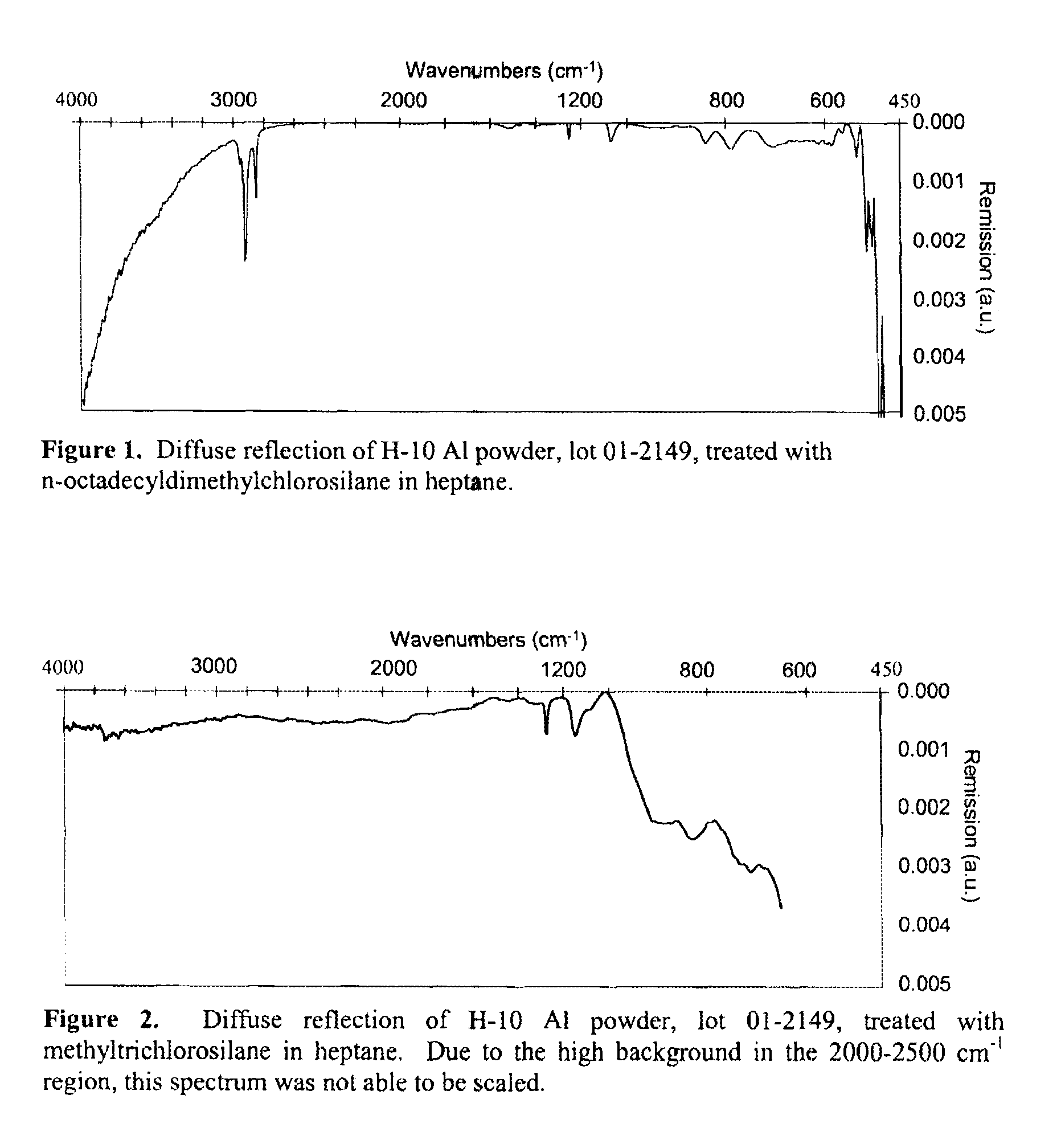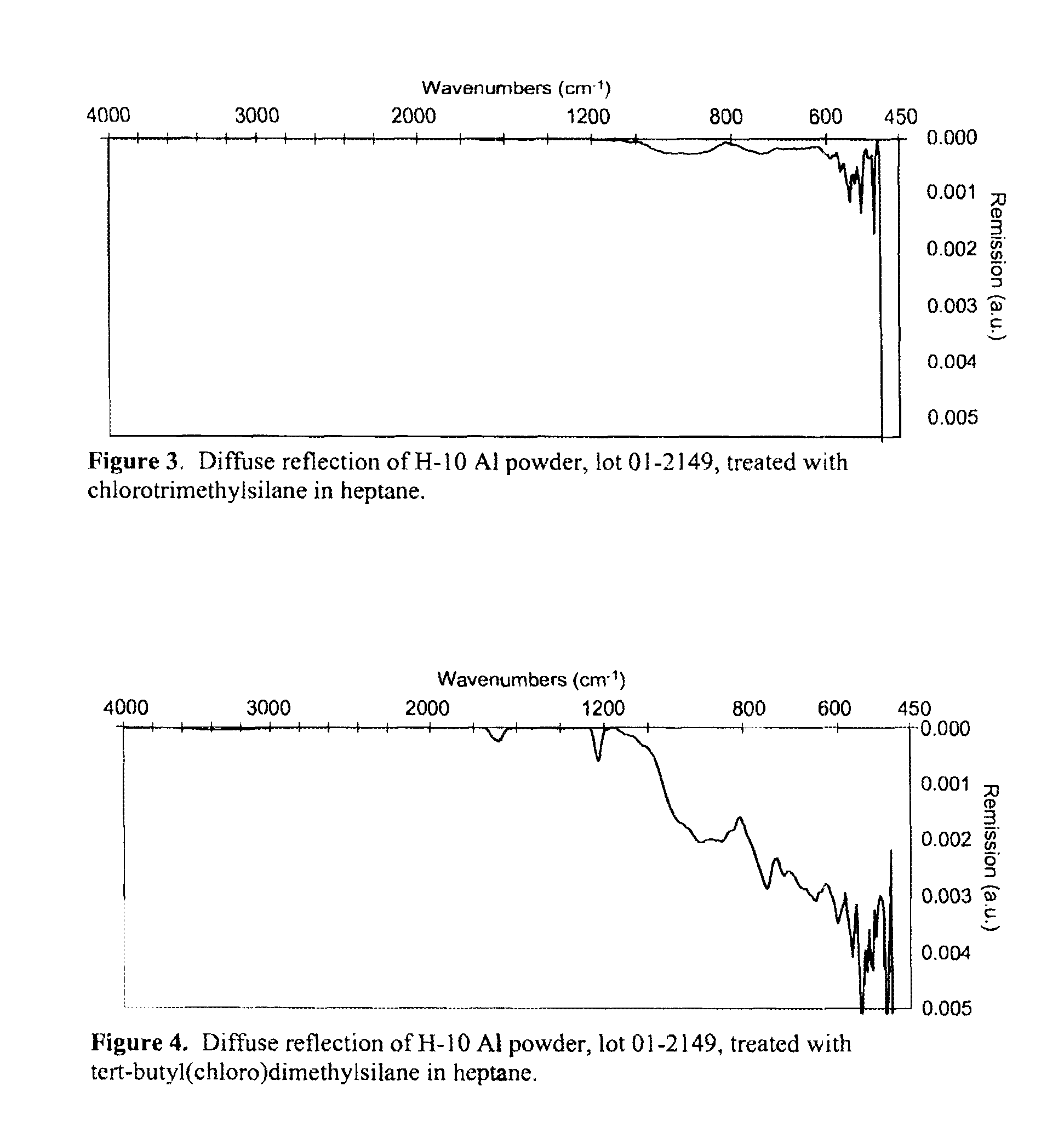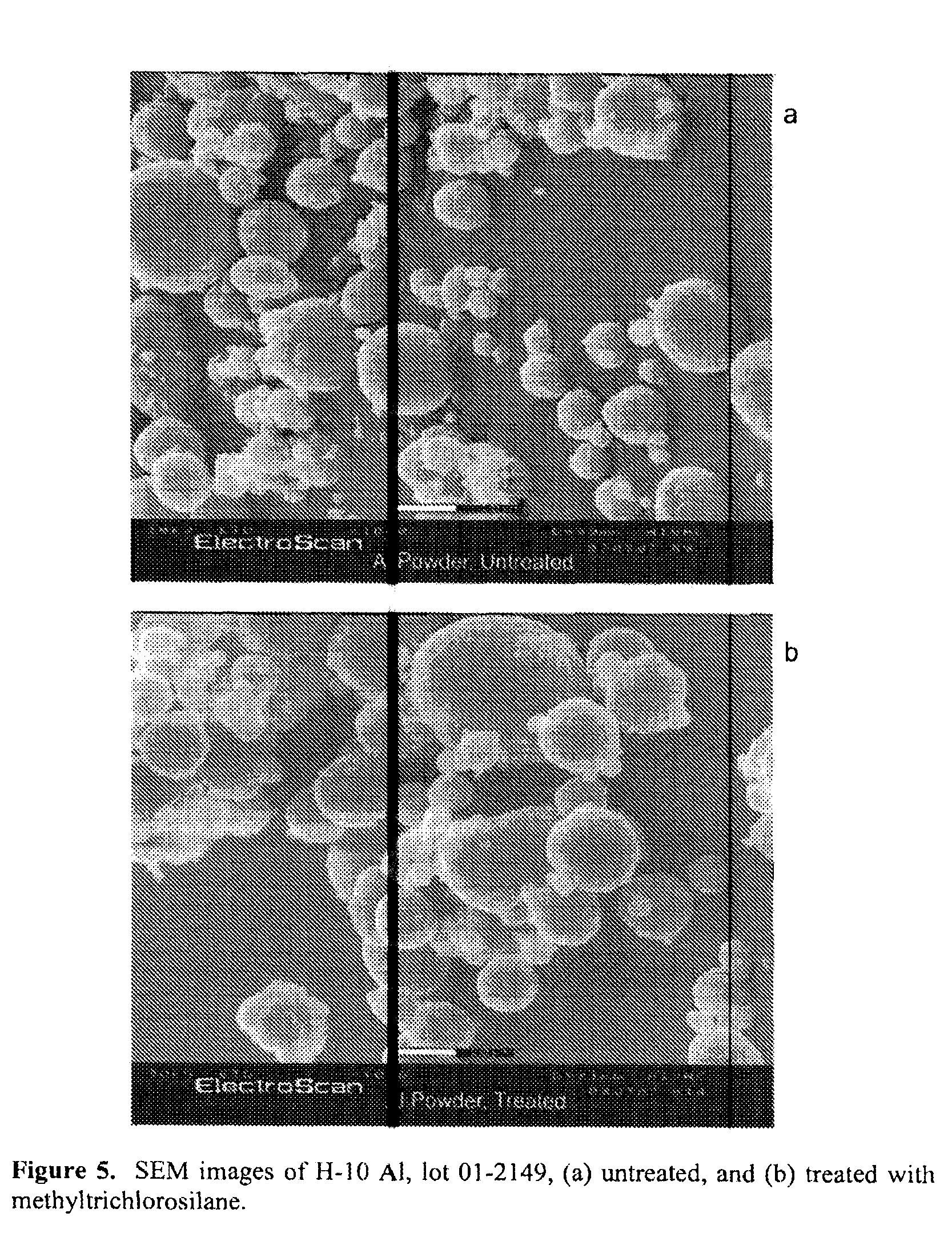[0010]The novel process of the present invention provides a significant improvement in the flow behavior of reactive metal powders obtained by
surface modification with alkylsilane reagents. The powders treated by this process become hydrophobic and are not readily wetted by water. Dramatically improved flow characteristics of the treated powders are demonstrated by lower
angle of repose, higher pour density, higher packing density, and shorter times required for sieving. For example, the improvement in powder flow behavior was demonstrated by
angle of repose measurements, which showed up to a 30° reduction for the treated powders. In one embodiment, the
chlorosilane compound is diluted with a
hydrocarbon solvent to facilitate efficient mixing with the
metal powder. After mixing, the
solvent and unreacted
chlorosilane compound are separated from the
metal powder by
distillation or
filtration. After
drying, the treated
metal powder may be sieved to remove small amounts of clumped material. Chemical analysis of the treated powders shows that small amounts (<0.05%) of
silicon and
chlorine are incorporated. In an alternative embodiment, a
vapor phase treatment using a chlorosilane compound without a
solvent may be used.
[0011]The process disclosed herein was readily scaled to 105-pound batches with a moderately high
throughput. Further scale-up requires only larger scale equipment.
Silane treated aluminum powders with nominal sizes of about 5-10 microns exhibited improved flow behavior, with higher solids loading under pressurized delivery and higher packing density.
[0013]The improvement in metal powder flowability provided by the present invention has the potential for direct application to many processes and applications involving the flow or mixing behavior of metal powders, such as the manufacture of pharmaceuticals and lubricants,
powder metallurgy, the
powder injection molding (PIM) of metal,
ceramic and / or composite powders,
powder coating,
composite material formulation and formulation of energetic materials. [a) Kubota, N. Thermochemical Aspects of
Combustion; Wiley-VCH: New York, 2002, p. 76. b) Johnson, C.; Parr, T.; Hanson-Parr, D.; Hollins, R.; Fallis, S.; Higa, K. “
Combustion and Oxidation of
Metal Nanoparticles and Composite Particles” JANNAF 37th
Combustion Subcommittee Meeting, Vol. 1. CPIA, November 2000, pp. 539-551.] Due to enhanced
aerosol formation, the metal powders provided by the present invention may also be useful in
fluidization processes and certain
combustion applications, including the
combustion synthesis of metal
oxide powders. The term “fluidizability” as used herein shall mean the ease with which a powder may be made more fluid. It is known to those of ordinary skill in the art of the subject invention that a powder may be fluidized, such as in a
fluidized bed or
aerosol, for example. The improved dispersion properties of micron-sized or nano-sized powders provided by the present invention may render them useful in
inkjet printing applications.
[0015]Advances made in understanding how changing the surface modifying agent, solvent and metal powder affect the flowability of metal powders are disclosed herein in connection with the process of the present invention. The metal powders examined in connection with the present invention include aluminum powder (
ranging in size from a nominal 2 microns to a nominal 10 microns in
diameter),
magnesium powder,
magnesium-aluminum
alloy, and
titanium powders. It will be understood by one of ordinary skill in the art of the present invention that powders of other sized particles and of other metals and materials having hydroxyl terminated surfaces may be successfully treated by the process of the present invention and are within the scope presently disclosed invention. Alkylchlorosilanes, such as
methyltrichlorosilane, are used as preferred particle surface modifying reagents. It is another realized object of the present invention to provide a simple, reliable and inexpensive process that is amenable to a high
throughput scale-up, to
handle powder lots on a scale of tens to hundreds of pounds, utilizing readily available reagents and equipment to provide significantly improved metal powder flow characteristics.
 Login to View More
Login to View More 


